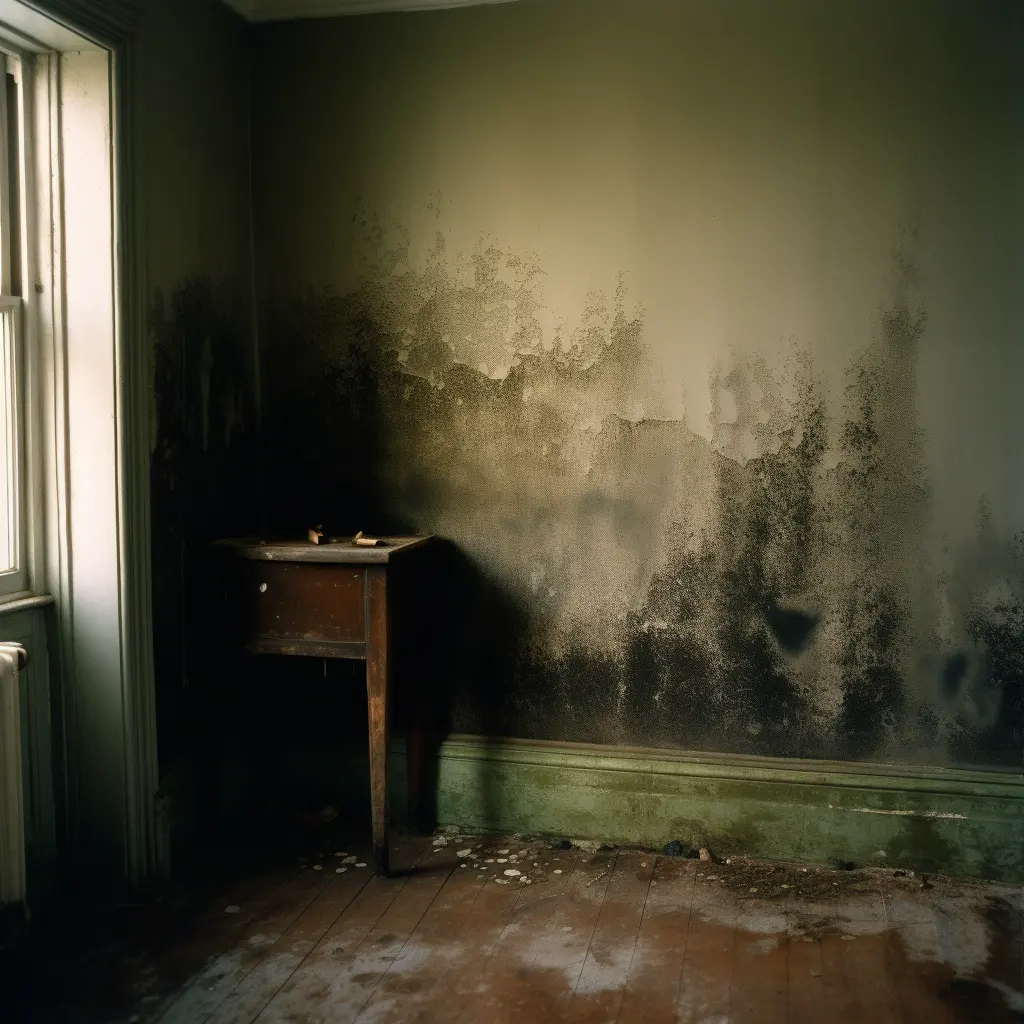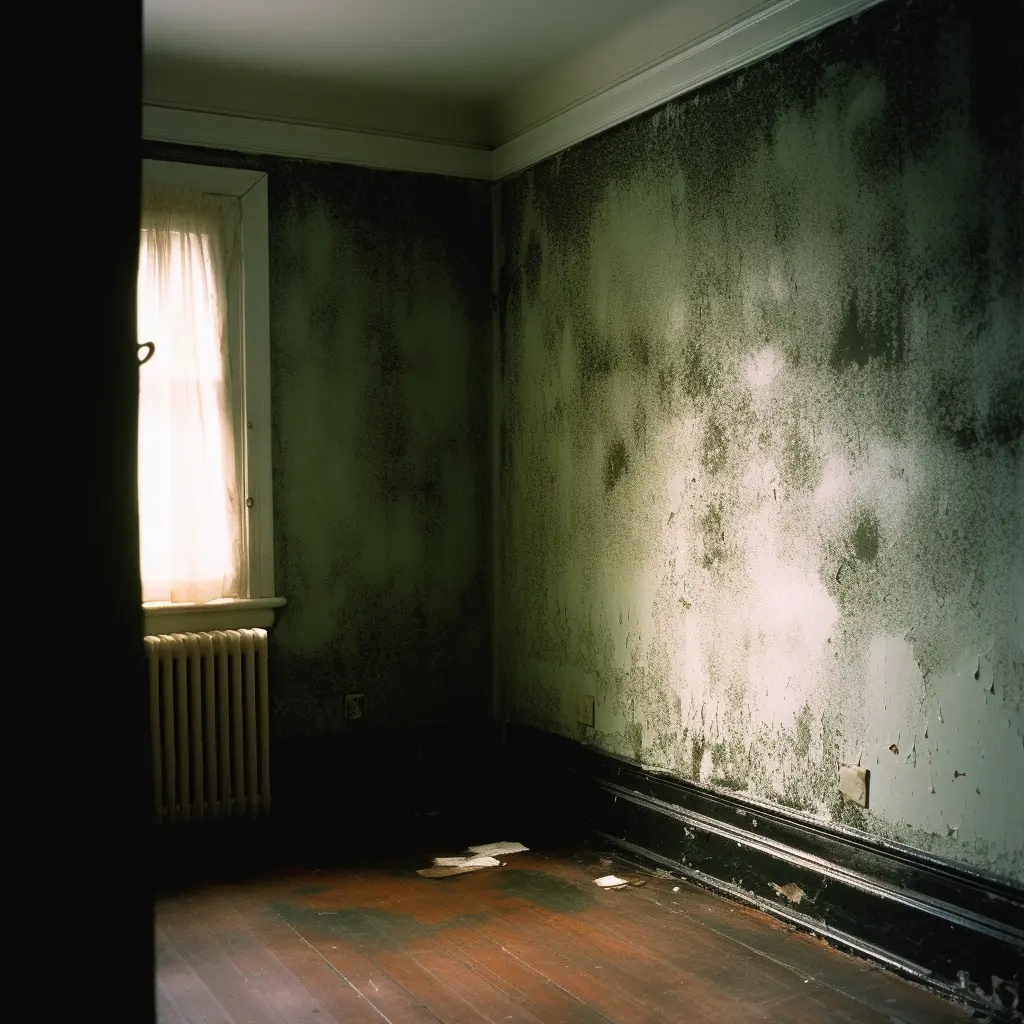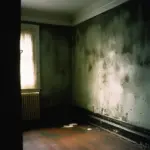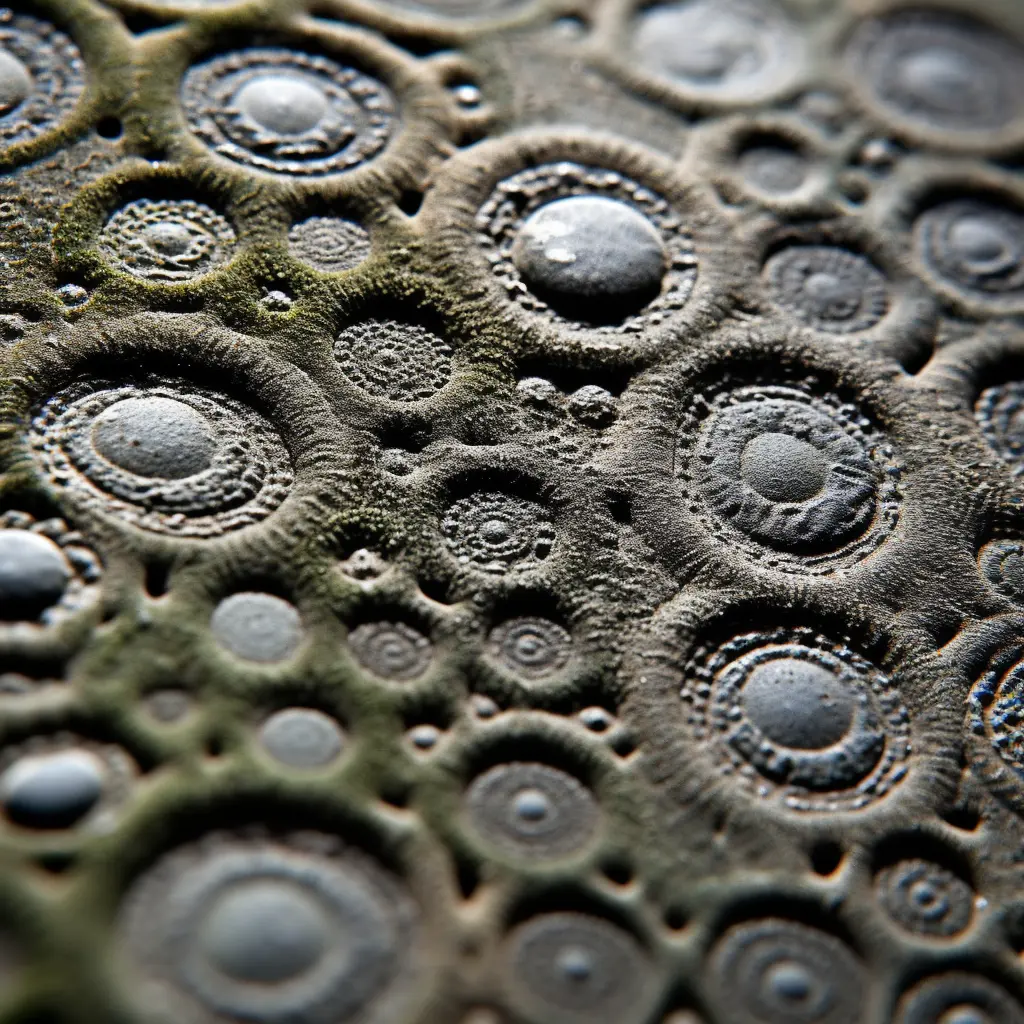Ever asked yourself, ‘what does black mold look like?’ Black mold, scientifically known as Stachybotrys chartarum, is a potentially harmful fungus that can pose serious health risks and inflict damage to your home. This blog post will delve into what black mold looks like, how to spot it in your home, ways to prevent its growth, and the right methods for its removal. With our guidance, you’ll be equipped to identify what black mold looks like in your living space and take necessary actions before it escalates into a major problem.
Key Takeaways
- Black mold, also known as Stachybotrys chartarum, is a potentially toxic fungus that can cause serious health issues and damage to your home.
- Black mold has a fuzzy, slimy appearance and can be greenish-black or dark brown in color, often growing in circular patterns. It typically thrives in high moisture areas with cellulose-rich materials such as fiberboard, gypsum board, or paper.
- Identifying black mold can be challenging; signs to look out for include discolored patches on walls or ceilings (especially dark green or black circular spots), musty odors that may be stronger in damp areas like basements and bathrooms, visible water damage or leaks creating breeding ground for its growth.
- Proper ventilation through fans installation and regular cleaning practices such as surface wiping using vinegar solutions are effective ways of preventing the growth and spread of black mold. Professional removal services should always be sought if necessary because they have specialized equipment designed specifically for killing toxic molds safely – using amateur methods can endanger individuals’ lives by disturbing harmful toxins released by disturbed colonies.
Table of Contents
Appearance Of Black Mold

Black mold has a fuzzy, slimy appearance and can be greenish-black or dark brown in color, often growing in circular patterns.
Characteristics Of Black Mold
One of the distinguishing features of black mold, scientifically known as Stachybotrys chartarum, is its slimy and wet appearance. It typically thrives in high moisture areas with cellulose-rich materials such as fiberboard, gypsum board, or paper.
Black mold may also exhibit variations in color by taking on shades of gray or green. Moreover, it often grows in concentric circles creating a distinct pattern that can be visible even from afar.
Knowing these characteristics can help homeowners identify potential mold infestations early on and take appropriate action to prevent further growth and health risks associated with toxic black mold exposure.
Color Variations
Black mold, scientifically known as Stachybotrys chartarum, is notorious for its potential health risks and the damage it causes to home environments. Although the name suggests that it may only appear in one hue, black mold can actually display a variety of colors.
The exact color variation depends on factors such as the surface it’s growing on and the specific stage of growth. For instance, during early stages of development, black mold often appears as fuzzy white fibers resembling cotton balls before transforming into its darker, more recognizable form.
Identifying Black Mold

Identifying black mold can be challenging as it often looks similar to other types of molds, but by paying attention to circular-shaped spots and distinctive musty odors, homeowners can protect their homes from potential health risks.
Signs And Symptoms
Recognizing the signs and symptoms of black mold in your home is crucial for maintaining a healthy living environment. Keep an eye out for:
- Discolored patches on walls, ceilings, or floors, especially dark green or black circular spots.
- Musty, earthy odors that may be stronger in damp areas like basements, bathrooms, and kitchens.
- Visible water damage or leaks that can create a breeding ground for mold growth.
- Increased humidity levels and condensation on windows or pipes.
- Peeling paint or wallpaper due to excessive moisture.
- Warped wood or swollen drywall caused by water absorption.
- Unexplained health problems such as respiratory infections, allergic reactions, and persistent coughing or sneezing.
By staying vigilant about these signs and symptoms in your home, you can quickly address any potential black mold issues before they become more severe and costly to remediate.
Prevention And Removal
Preventing black mold growth requires regular cleaning and proper ventilation, while removing it often involves hiring a professional mold specialist to ensure complete eradication.
Proper Ventilation
Proper ventilation is crucial in preventing the growth and spread of black mold. It’s important to ensure that moisture does not build up in enclosed spaces, as this creates an ideal environment for mold spores to grow.
Installing exhaust fans or opening windows can help circulate air and reduce humidity levels.
Without proper ventilation, even dry areas could become a breeding ground for toxic molds like Stachybotrys chartarum which require constant moisture to thrive. Regular checks on your home’s HVAC system and filters should also be done because it keeps the air clean from these toxic substances that could lead to respiratory infections or allergic reactions.
Regular Cleaning
Keeping your home clean is essential for preventing and controlling the growth of black mold. Here are some tips for regular cleaning:
- Clean and disinfect any areas that have been affected by water damage or leaks.
- Use a HEPA filter vacuum regularly to remove mold spores from carpets, curtains, and furniture.
- Wipe down surfaces in rooms with high humidity, such as bathrooms and kitchens, using a solution of vinegar and water or hydrogen peroxide.
- Replace shower curtains or liners that show signs of mold growth.
- Wash bedding and clothing in hot water if they have been exposed to mold.
- Keep air conditioning units clean and well – maintained to prevent the buildup of moisture.
- Remove any clutter in your home that may be trapping moisture, such as cardboard boxes or piles of newspapers.
By incorporating these regular cleaning practices into your household routine, you can help prevent the growth and spread of black mold in your home. Remember to always wear protective gear when handling mold, and seek professional help if necessary to ensure safe remediation.
Professional Removal
If you suspect black mold in your home, professional removal may be necessary. Mold specialists have the expertise and equipment to properly identify, contain and remove all traces of the mold.
This is especially important if the infestation is extensive or if there are health concerns for anyone in the household.
While it may be tempting to try DIY solutions for mold removal or use over-the-counter products like bleach or vinegar, these methods may not effectively remove all traces of mold spores which can lead to future regrowth.
It’s also important to note that attempting amateur remediation can expose individuals to harmful toxins released by disturbed black mold colonies.
Overall investing in professional removal services will give homeowners peace of mind knowing their home has been thoroughly inspected and treated by experienced professionals who know how best address a black mold infestation safely without causing more harm than good.
Conclusion
In conclusion, identifying black mold is crucial for every homeowner. Black mold may appear in varying colors and shapes, but it commonly grows in damp environments such as basements, bathrooms, or kitchens.
Early detection and proper prevention methods can help avoid the risks that come with exposure to toxic black mold. Remember to maintain good ventilation, regular cleaning routines and seek professional removal when necessary.
Left unchecked, you may want to consider walking away from a house with mold.
FAQs
What does black mold look like?

Black mold, also known as Stachybotrys chartarum, is a type of fungi that can grow in damp and humid areas. It has a slimy or powdery appearance and typically appears dark green to black in color.
Is black mold dangerous?
Yes, exposure to black mold can cause health problems such as respiratory issues, allergic reactions, and even neurological symptoms in some cases. It’s important to take proper precautions when dealing with potential mold growth.
Where is black mold commonly found?
Black mold tends to thrive in areas that are moist and humid, such as bathrooms, kitchens, basements or any area with water damage or poor ventilation. Mold spores can also spread through the air conditioning systems if they’re not maintained properly.
How do I get rid of black mold?
It’s best to hire a professional if you suspect significant black mold growth in your home or workplace because it requires specialized equipment and expertise for safe removal. However minor cases may be cleaned up using bleach solution mixed with water – be sure to wear protective clothing & gloves when cleaning up contaminated areas! Additionally – proper preventative measures must always be taken including fixing any leaks/sources contributing towards moisture build-up within property otherwise recurrence becomes likely over time again (even after laborious clean-ups).
